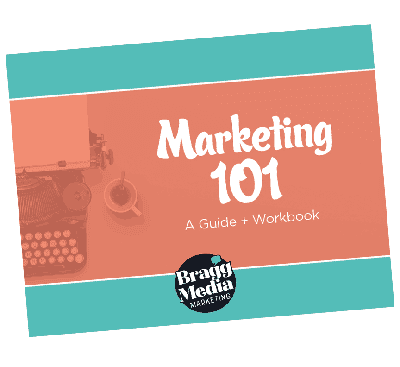
If the dizzying array of marketing strategies doesn’t leave you spinning year-round, along comes the New Year’s blogs on top marketing trends.
We scoured a plethora of expert advice to elevate your business next year. And we settled on these 7 marketing trends in 2020 that you should consider adopting.
Shoppable social media posts have powerful effect, Forbes
Chances are, you or someone you know has made a purchase through a social media platform. Forbes reports that 72% of Instagram followers have bought a product from the app. However, Instagram is not the only platform to experience a surge in direct consumerism, 70% of Pinterest users said they use the pinning platform to find products they want to purchase.
Shoppable posts make the buyer’s journey easy and convenient. And there are no signs that social media as an ecommerce tool will slow down any time soon.
Lifecycle marketing keeps consumers informed, Smart Insights
Did you hear? The sales funnel is dead.
Welcome to the flywheel model, which solely focuses on attracting, engaging and delighting the customer. Today’s savvy customers want organic relationships with brands. They are tired of disruptive forms of marketing that take up too much of their time.
So, how do you reach today’s audience? According to Smart Insights, marketing should be centered around the customer experience and their journey — attract, convert, engage and delight.
This strategy should include both offline and online marketing that grows awareness — including paid media, owned media, earned media and experience. The “always-on lifecycle marketing” uses retargeting, marketing automation and other technologies to touch base with customers at the various points when they’re considering your brand.
Through perpetual brand awareness, businesses and organizations are using intelligent ways to build their brands’ reputations as trustworthy resources.
Optimize for on-SERP SEO, Entrepreneur
In Search Engine Result Pages (SERP) marketing, page 1 of Google has long been the coveted prize. For 2020,the competition is more fierce than ever.
Perhaps the most competitive SERP goal is now zero-click searches, which occurs when Google provides the answer in an automated snippet. When you Google “What is SERP SEO?” you will find an immediate answer at the top of the page. You have to scroll down to see other organic search results.
Entrepreneur reports that zero-click results are growing in number — leaving the organic traffic that marketers rely on for new customer prospects in the digital dust.
Pay Per Click (PPC) ad agencies and other digital marketers that rely on Google marketing are scrambling in a race to see who will come out on top of zero-click results.
Good-bye, Google Analytics. Hello, business intelligence solutions, Neil Patel
SEO guru and digital marketing influencer Neil Patel predicts a large shift of resources to business intelligence solutions. He warns against relying too heavily on Google Analytics for your website’s data.
The reasons for this shift involve the complicated world of e-commerce. From checkout bumps to upsells and from repeat purchases to waiting to be processed, the ecommerce companies who are succeeding are the ones processing multiple forms of data. When you add other factors to the mix, such as affiliate marketing and webinars, websites need a more complicated checkout system in place to manage all of these variables. Brands are using more sophisticated forms of analytics tools — including paid options such as Amplitude or free tools such as Google Data Studio — that work with complex, variant forms of data.
In other words, there is a huge push for business intelligence tools that combine business analytics, data mining, data visualization, data tools and infrastructure to make more informed decisions about their business.
Content is still “king of the castle,” Inc.
Content is not going away and will see a huge push in 2020, according to Inc.
However, the key is quality over quantity. Your audience craves authenticity and real answers to their questions — which they naturally seek out online. They also want to be entertained, which is why Inc. recommends diversifying your content with video and interactive forms of content such as quizzes and polls.
Inc. also recommends keeping up with regular blogging and other longer forms of written content. These articles serve as doorways to your virtual office front (a.k.a. website). “Content is the coal that makes your marketing strategy roll, but content that is overused, saturated, or posted for the sake of posting will negatively affect engagement,” Inc. warns.
The bottom line: your content should attract and engage your audience. Don’t settle for low quality content or you risk annoying your audience.
Use ephemeral and permanent social media content, HubSpot
What does this even mean?
The first step is to understand the difference between ephemeral (fleeting) and permanent (long-lasting). The second step is to know when to use these two forms of social media content.
Ephemeral social content includes Instagram stories, which is increasingly growing in popularity. Brands use animated gifs, Boomerangs, filters, colored text and more to add some fun and flavor to their social media channels.
Permanent social content, on the other hand, requires timely and consistent content to serve up information about your brand.
HubSpot suggests taking a clear look at your social media strategy: How do you want your brand to be portrayed in terms of personality and character? Are you more informative than trendy? Are you more fun or serious?
Temporary and permanent social media content gets you where your customers are. Don’t get left behind.
Brands need “to walk the talk and talk the walk,” David Yates from ELVIS:
In today’s woke world, the public is paying attention to how brands do business — from sourcing product materials to researching ingredients are in their food and from questioning how employees are treated to standing by a brand’s political affiliations.
David Yates is a managing partner at ELVIS, a global creative partner for famous brands, including Cadbury, OREO, Honda, Disney, Kenco, Budweiser, Stella Artois, & Corona.
“… This means that advertisers can no longer get away with the glossy, empty promises of yesteryear …,” Yates said in econsultancy.com. “… In 2020, advertisers will need to walk the talk and talk the walk. Not only making real and substantial changes to the way they run their businesses to align with modern consumer expectations, but also talking about that boldly and authentically so that it gets noticed and drives purchase behaviour.”
“It’s not cool to be manufactured” on Instagram, The Atlantic:
If 2020 has a marketing theme, it’s to be authentic.
The Atlantic says Instagram users are tired of looking at a wall of avocado toast and colorful walls on their Instagram app. Influencers and brands alike want to be more accessible and relatable to their audience. And the perfect staged photos and “branded” filters aren’t cutting it any more.
Many young influencers are “rejecting the notion of a curated feed in favor of a messier and more unfiltered vibe.” Blogs about best Instagram practices say that brands should pick an aesthetic and stick to it. Many purported experts say to choose your filter wisely.
If it’s authenticity the teens quoted in this article are looking for, their Instagram posts are still staging their reality. However, they’re onto something.
Life is non-linear. Life is messy. Shouldn’t social media reflect that?
Free Interactive Workbook

No one wants to spend time or money on marketing efforts that don’t work! This marketing workbook and guide will help you develop a strategy that brings results!
Get social with us!
Like what you’re reading?
Subscribe to Bragg Media’s monthly newsletter.
